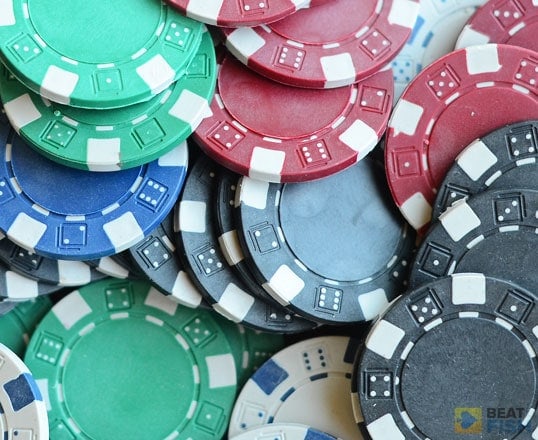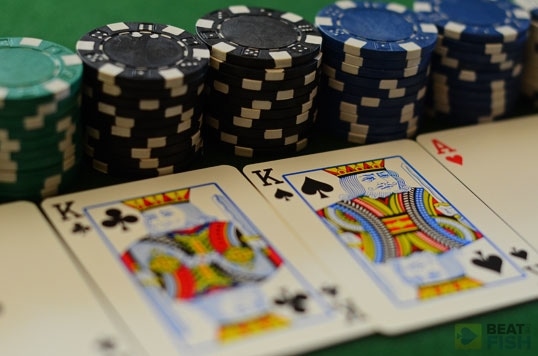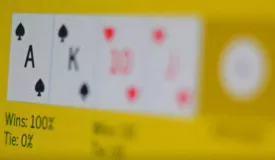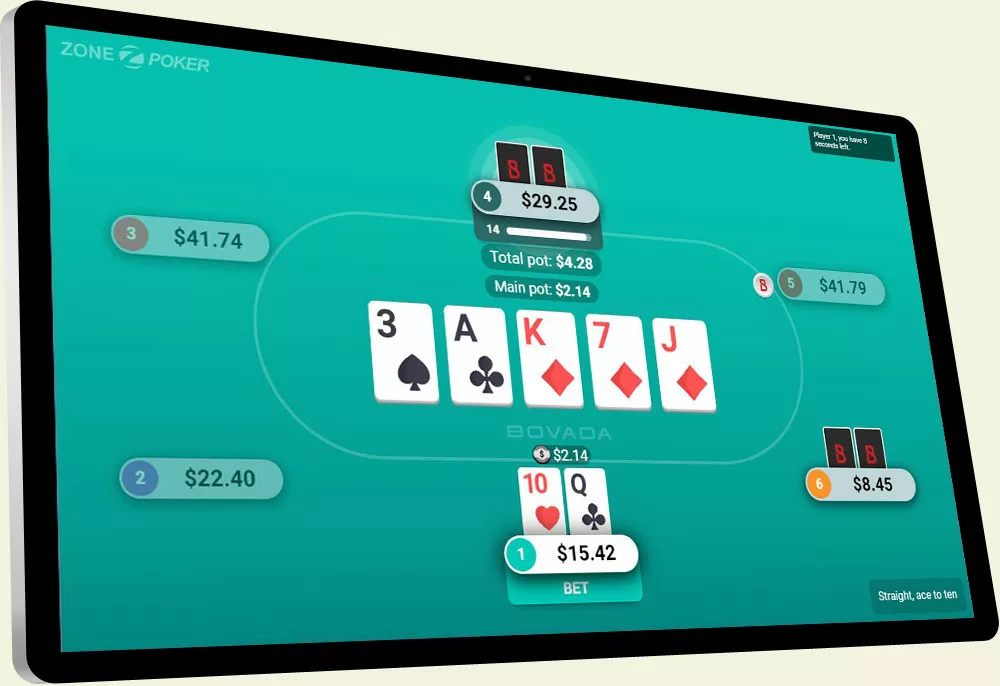The Method for Avoiding Poker Pot Odds Mistakes

In this reference article, I’d like to explain the concept of pot odds including what it is, how to calculate it, and why it’s important to you as a smart poker player.
While many poker authors, television commentators, and professional players will talk about getting “the right price on a call” or getting the right odds on a play, what exactly are they referring to and how can you come to the same conclusion when playing for yourself?
These terms all relate to pot odds so I hope to help you understand this essential poker fundamental with the following questions and answer article.
Table of Contents
What are “pot odds”?
Pot odds are simply the odds that the pot is giving you on your play. For example, if the pot is $10 and it costs you $2 to call, you are getting 5:1 (spoken “5 to 1”) pot odds. In this instance, it costs you $2 for the chance to win $10.
If you’re playing in a live game or on a site that doesn’t show the active pot amount you’ll need to include all money that has been bet instead of just the money sitting in the pot from previous betting rounds.
How do I calculate pot odds?
Using simple addition and division you can at least approximate your pot odds at any given moment. While it may seem intimidating, all you have to do is divide the pot by the amount it costs you to call.
If you’re in a big hand and the pot is $90 on the flop and your lone opponent bets $10 into you, you divide 100 (the existing $90 plus your opponent’s $10) by 10 (the 10 it costs you to call) to come up with 10. You’re getting 10 to 1 pot odds to make the call.
At least give yourself an approximation
Even if the numbers aren’t as simple, try estimating to get an approximate idea of your odds. If the pot is $85 and you have to call a $20 bet, the exact odds are 4.25 to 1.
Instead of taking the time to figure that out, you know that it is much closer to 4 (4×20=80) than 5 (5×20=100) so you’ll give yourself pretty close pot odds by simply figuring that call as 4:1. Again, just divide the total pot by the amount it costs you to call.
How are pot odds useful?
Without any context pot odds sounds like an interesting mathematical quirk of an inherently mathematical game. However, when you begin to compare the pot odds you’re getting with the actual odds of making your hand, they actually become very useful.
Examples of pot odds in action
Completing a four-flush
For example, on the flop you know that you are approximately a 2:1 underdog of making your open-ended straight or completing your four-flush by the river. If you didn’t know that you might want to review my Texas Hold’em Odds page first.
Compare those odds of making your hand to your pot odds to see if the call is worthwhile.
If you have an open-ended straight draw and are facing a $5 bet into a $20 pot, you’re getting 4:1 pot odds. This means that you need to make your hand 1 out of 5 times to make a profit. Since you’ll make your straight 1 out of 3 times by the river, this is an easy call.
Pot odds with a set vs. made flush
Another example would be hitting a set on the flop with 3 suited cards on the board. For this scenario let’s assume that your opponent already has a completed flush. If your opponent bets out $30 and makes the pot $110, you should probably call.
In this situation, you’re getting almost 4:1 pot odds on your money and the odds of making a full house by the river are about 2:1. You’re essentially the one drawing at this point, but he’s given you the right odds to do so.
However, if you knew your opponent had a small flush and he bet out $140 to make the pot $220, you may want to dump the hand. You need to call $140 for the chance to win $220, or only about 1.5:1 pot odds when the actual odds of making a full house by the river are about 2:1.
Hoping for a set on the flop with a pocket pair
Finally, an extremely common draw in no-limit Hold’em is playing any pocket pair preflop with the hope of making a set on the flop. The actual odds of making your set on the flop are about 7.5:1 – not very good at all.
However, when lots of players limp in and the pot slowly grows the pot odds on your call begin to make it more worthwhile.
While you’ll rarely be receiving 7.5:1 or better pot odds the return on your play becomes much better when the pot grows in relation to the small amount required to call.
Of course, implied odds can also enter the equation, which is a powerful but unreliable concept.
More uses for pot odds
While the above examples are drawing situations you can also use pot odds effectively in all-in tournament situations. When you hear about players getting “priced in” or “having to call” they’re talking about the pot odds.
Tournament example to get the “right price” on a call
Let’s say that it’s the final table of a major televised tournament with the blinds at 50,000/100,000. The short stack moves all-in from the button for a measly 200,000. The small blind folds and the big blind looks down to find K-9 offsuit.
He has to call 100,000 more for a chance to win a current pot of 350,000 (the blinds plus the 200,000 bet). The pot odds are 3.5:1 and this makes it an almost automatic call as he’s getting more than the right odds against an underpair or even a single overcard. Thus, he’s getting the “right price” on his call.
You can also compare the pot odds to the likely odds that your opponent has you beat. If you’re getting almost even-money pot odds on an all-in call but think that there is only a 1 in 4 chance that your opponent has you beat right now, this can help you decide whether or not to make the call.
Another “have to call” situation in tournaments comes when a player is getting better than 2:1 odds by calling an all-in bet holding a straight or flush draw on the flop.
Should you ever overlook the pot odds?
Of course, pot odds are certainly not everything in poker. There may be times in tournaments where you’re obviously getting the right pot odds on a call but simply don’t want to risk a lot of chips on a potential gamble.
That is often the philosophy of successful tight tournament players like Phil Hellmuth who usually won’t risk a substantial amount of chips on any single hand unless they’re a clear favorite. You may be in a cash game in which you cannot afford to play a lot of draws regardless of the pot odds.
Conclusions on why pot odds are so essential
The conclusion should that I’d like you to take away from the concept of pot odds is that it’s an effective tool to calculate the odds you’re getting on any given call. In fact it’s probably the most essential concept in poker.
Just remember that it’s simple to calculate: just divide the total pot by the amount it costs you to call. Then compare that to the odds of your hand (or your opponent’s likely hand) improving to make the best fold, call, or raise.
If you find that you routinely make calls against the odds that the pot is offering you try to reevaluate your play and plug up this leak in your game. If you always make calls with the proper pot odds you will statistically come out ahead in the long-run.













